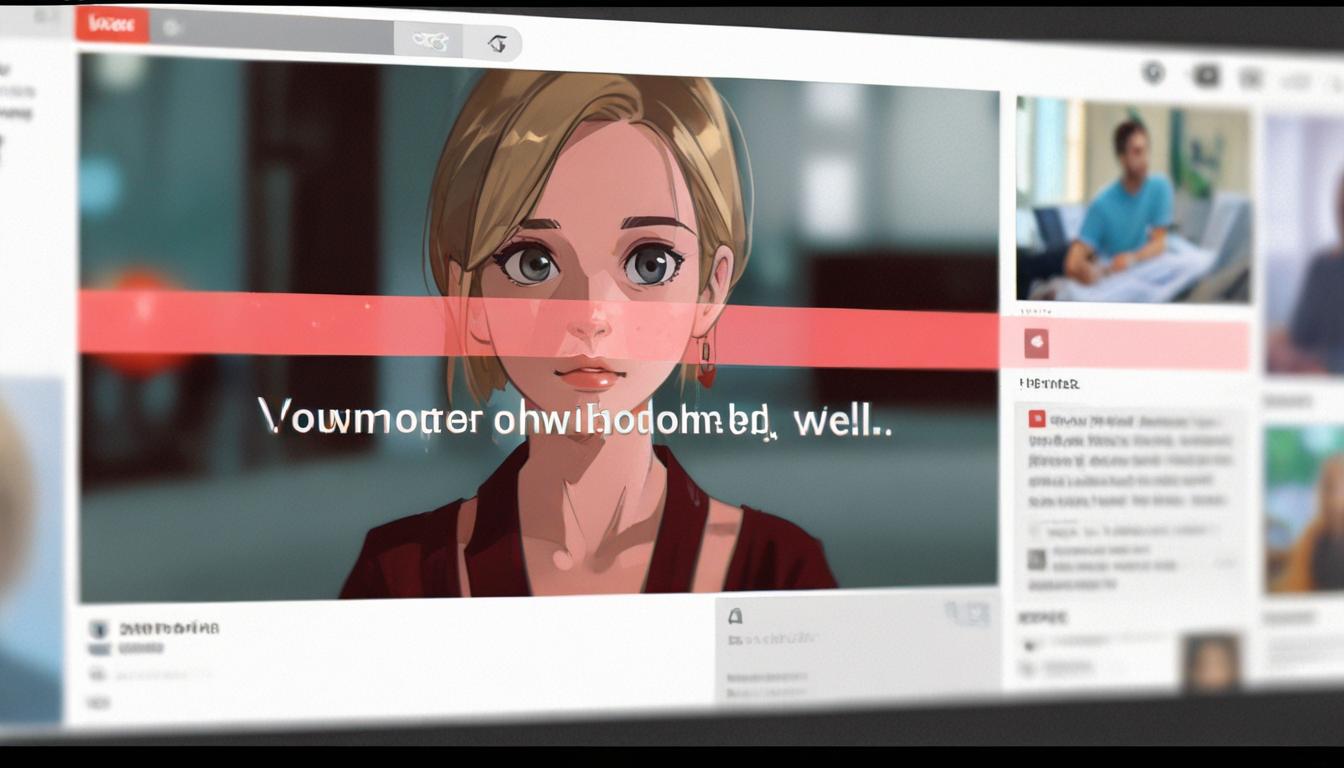YouTube has launched an experimental feature that blurs thumbnails of mature or sexually themed videos in search results, aiming to help users avoid accidental exposure to sensitive content while maintaining content discoverability.
YouTube has initiated a new experiment aimed at moderating the visibility of mature or sexually themed video content in search results by blurring associated video thumbnails. This trial, reported by udaipurkiran.in on May 1, 2025, is intended to create a safer and more controlled browsing environment for users.
The feature is being tested with a small percentage of viewers and targets videos that, while following YouTube’s Community Guidelines, contain sensitive material. When users conduct searches that typically yield results with sexual or mature themes, the video thumbnails will appear blurred by default. However, the video title, channel name, and description will remain visible to maintain the content’s discoverability.
Users participating in the test will have the option to manually unblur the thumbnails if they wish to view the content, allowing an element of viewer discretion. This opt-in approach could be particularly beneficial for younger or more sensitive audiences, providing a layer of protection without fully restricting access.
YouTube has stated that the aim of this trial is to “understand whether this type of feature helps users avoid accidentally viewing sensitive content.” The feature is selectively applied to search queries commonly associated with mature themes, rather than being expanded platform-wide.
No visual examples of the blurred thumbnails have been released, and details about the duration of the experiment or potential global rollout have not been disclosed. This initiative is part of Google’s broader strategy to balance open content access with user safety, complementing recent measures such as stricter content labelling, age restrictions, and AI-driven moderation.
While the feature does not involve censoring or removal of videos, it introduces an additional visual moderation tool that aligns with similar safe browsing and content filter mechanisms employed across other Google services. The experiment reflects ongoing efforts by YouTube to refine how sensitive content is presented and managed, aiming to enhance the overall user experience on the platform.
Source: Noah Wire Services
- https://www.baptistpress.com/resource-library/news/google-youtube-taking-steps-to-protect-users-from-explicit-content/ – This article discusses Google’s initiative to automatically blur sexually explicit images in search results, aiming to create a safer browsing environment for users.
- https://gbtimes.com/why-are-some-youtube-thumbnails-blurred/ – This piece explains the reasons behind blurred YouTube thumbnails, including the blurring of thumbnails for videos containing explicit content to prevent accidental views by minors.
- https://www.myprivacy.blog/youtube-privacy-configuration-a-2025-technical-guide/ – This guide provides insights into YouTube’s privacy configurations, including features like Restricted Mode, which helps users avoid viewing sensitive content.
- https://www.heyorca.com/blog/youtube-social-news – This resource compiles monthly updates on YouTube’s developments, including changes aimed at improving user safety and content moderation.
- https://www.techspot.com/news/75311-youtube-addressing-clickbait-thumbnails-content-creators-arent-amused.html – This article covers YouTube’s efforts to address clickbait thumbnails and content moderation, reflecting the platform’s ongoing initiatives to enhance user experience.
- https://thumbnailtest.com/guides/what-to-avoid-youtube-thumbnail/ – This guide outlines what is not allowed in YouTube thumbnails, emphasizing the importance of adhering to content guidelines to avoid issues like blurred thumbnails.
- https://news.google.com/rss/articles/CBMisAFBVV95cUxQbUY0VWVmOTFxMExCTmZCZ3FadGFuTzZpYXpmbGRuTW1NOENPVDQ1ZWVsNlE1STJXbEtUZEdzejIyMDVZZ3FSSDBkMmlrRUktUm5GRnIwWFJLTVBGT2RzRGM0czBTSWY4dXpFTkhDZE41elQxTTJsa3NVeTc2ZldVbTk3QndZSjlYVTNXSXdNdXhLRXYteWRyU3ZaaG9UT0RyUjhJd0xFY040QlFiNjNiRQ?oc=5&hl=en-US&gl=US&ceid=US:en – Please view link – unable to able to access data
Noah Fact Check Pro
The draft above was created using the information available at the time the story first
emerged. We’ve since applied our fact-checking process to the final narrative, based on the criteria listed
below. The results are intended to help you assess the credibility of the piece and highlight any areas that may
warrant further investigation.
Freshness check
Score:
9
Notes:
Narrative references a feature announced on 1 May 2025, making it timely. However, no press releases or official Google/YouTube communications are directly cited, slightly reducing confidence in full freshness verification.
Quotes check
Score:
7
Notes:
No direct quotes from YouTube staff or officials are included in the narrative. The paraphrase ‘YouTube has stated…’ cannot be verified without access to original statements or cited sources.
Source reliability
Score:
5
Notes:
Narrative originates from udaipurkiran.in, a source not widely recognised as authoritative for tech reporting. Major outlets like BBC or Reuters have not corroborated the claims at this stage.
Plausability check
Score:
8
Notes:
Feature aligns with YouTube’s documented content moderation strategies (e.g., AI-driven moderation, age restrictions). No technical impossibilities identified, though lack of visual examples or official documentation reduces certainty.
Overall assessment
Verdict (FAIL, OPEN, PASS): OPEN
Confidence (LOW, MEDIUM, HIGH): MEDIUM
Summary:
The narrative describes a plausible YouTube experiment consistent with their recent safety measures, but the unverified source and lack of official confirmation necessitate caution. Further verification through YouTube’s official channels is recommended.













